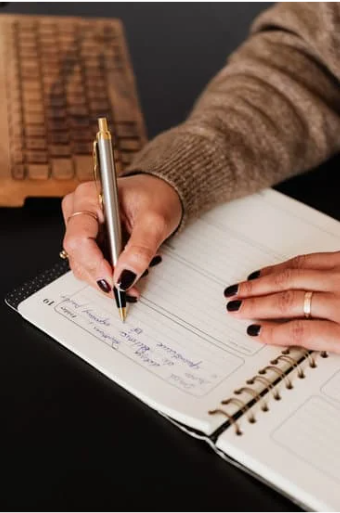Between late-night studying, upcoming tests and balancing sports, clubs and social lives, stress has become a familiar part of high school life. Many students are finding creative ways to manage it, and reminding each other that taking care of themselves is even more important than getting good grades.
School is very stressful, especially with academic and social pressures. High school can feel like a constant balancing between homework, sports and friendships. For many students, stress has become part of their daily routine.
Junior Shea Taylor admitted that feeling stressed has become normal. Between a full load of tough classes and playing volleyball, she’s had to learn how to manage her time and emotions.

“When I have a lot of homework or a lot of stuff to do, I make a list. Then I can see everything I have to do and get less stressed because it’s all in front of me, and I can process it,” Taylor said.
For many students, lists, planners, and even phone reminders are simple but powerful tools. Writing things down can turn chaos into something manageable, showing that sometimes the best way to fight stress is to make it visible.
Still, organization only goes so far. Taylor said one of her biggest struggles is finding time for everything she loves. “I took a lot of hard classes this year, and I’m a social person, so I want to spend more time with my friends. Balancing everything is the hard part.”
Shea’s words echo how many students feel there’s pressure to excel in every area, like academics, athletics and friendships. The challenge isn’t choosing between them but learning how to juggle all three without burning out.
While sports used to be her escape, Shea said that lately her real stress relief has come from time with friends. “Volleyball used to help me, but it hasn’t been as calming lately,” she said, “now it’s more about spending time with my friends. That helps me clear my mind.”
Experts often say that connection is one of the strongest buffers against stress, and Taylor’s experience proves it. Talking, laughing or simply being around people who understand can make the day’s challenges feel lighter.
Like many teens, Taylor wishes teachers and administrators would better understand the student side of stress. “A lot of adults think, ‘Oh, you’re just in high school, it’s fine,’ but we’re all trying to prepare for our future. I think they forget that we have seven other classes besides theirs.”
Her point highlights the common concern among students who feel that academic pressure sometimes outweighs mental balance. While teachers want students to succeed, the workload can sometimes make that success harder to reach.
For Taylor, learning to destress doesn’t mean avoiding pressure, but it means learning how to manage it. Whether through lists, laughter or just a moment to breathe, she’s found that small habits can make a big difference. “Everyone’s got their own way of dealing with it, you just have to find what works for you.”
In a world that often celebrates productivity over peace, students like Shea are quietly proving that success doesn’t have to mean stress; it can also mean balance.